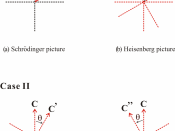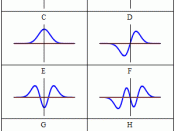The Quantum TheoryThe Quantum Theory, also quantum mechanics, is a theory in physics based on using the concept of the quantum unit to describe the dynamic properties of subatomic particles and the interactions of matter and radiation. The foundation was laid by the German physicist Max Planck, who hypothesized in 1900 that energy can be given off or absorbed by matter only in small, discrete units called quanta. Also important to the development of quantum mechanics was the uncertainty principle, founded by the German physicist Werner Heisenbera in 1927, which states that the position and momentum of a subatomic particle cannot be specified simultaneously.
In the 18th and 19th centuries, Newtonian, or classical, mechanics appeared to provide a complete and accurate description of the motions of bodies""for example, planetary motion. In the late 19th and early 20th centuries, however, experimental findings raised doubts about the completeness of Newtonian theory.
Among the later observations were the lines that appear in the spectra of light emitted by heated gases in which electric discharges take place. From the model of the atom developed in the early 20th century, by the English physicist Ernest Rutherford, in which negatively charged electrons circle a positive nucleus in orbits prescribed by Newton's laws of motion, scientists had also expected that the electrons would emit light over a broad frequency range, rather than in the narrow frequency ranges that form the lines in a spectrum.
Another enigma for physicists was the coexistence of two theories of light, the corpuscular theory, which explains light as a stream of particles, and the wave theory, which views light as electromagnetic waves. A third problem was the absence of a molecular basis for thermodynamics. In his book Elementary Principles in Statistical Mechanics (1902), the American mathematical physicist J. Willard Gibbs...


